Capernaum: A Town That Lost the Light
Capernaum was a picturesque town located on the northwestern shore of Galilee where the Jordan enters the lake. The city lay on a gentle slope rising from one of the numerous shallow coves that lend a gracefully serpentine appearance to the shoreline.
Beyond the fishing boats pulled up on the shore, the shops, and crowded houses, stood a lovely house of worship. The Capernaum synagogue was constructed of white limestone, in marked contrast to the buildings surrounding it. It was a beautiful building, the pride and joy of the community. All in all, Capernaum was one of those places artists and poets dream of discovering.
The importance of this place, however, is not related to its renowned beauty, nor to its ancient associations with Roman centurions, customs houses, or high-ranking government functionaries. Capernaum, in Galilee of the Gentiles, was, for the major portion of His public ministry, the home of Jesus of Nazareth—Messiah of Israel, Son of God. The works and words of Jesus in this bustling town by the sea elevate it to a position of prominence second only to Jerusalem.
Prophecy Fulfilled
That Jesus took up residence in Capernaum was not a decision lightly made. His being there was a direct fulfillment of a major prophetic passage.
And leaving Nazareth, he came and dwelt in Capernaum, which is upon the seacoast, in the borders of Zebulun and Naphtali, That it might be fulfilled which was spoken by Isaiah, the prophet, saying, The land of Zebulun, and the land of Naphtali, by the way of the sea, beyond the Jordan, Galilee of the nations; The people who sat in darkness saw great light, and to them who sat in the region and shadow of death, light is sprung up (Mt. 4:13–16).
This quotation from Isaiah 9:1–2 emphasizes the fact that this region—where the Assyrians, in decimating and scattering the northern tribes of Israel, brought darkness and death—would be the first to receive the light brought by the preaching of the Messiah.
Consequently, it was there that “Jesus began to preach, and to say, Repent; for the kingdom of heaven is at hand” (Mt. 4:17). The word repent is crucial to the story of Capernaum because, in the final analysis, the leaders of that town would make a clear choice, and their decision would prove catastrophic.
Works and Words
When Jesus had completed His ministry at Capernaum, His mighty works had invaded every segment of the community.
In the shadow of the synagogue, at the house of Simon Peter, lay a woman struck down by a raging fever. “And he stood over her, and rebuked the fever, and it left her; and immediately she arose and ministered unto them” (Lk. 4:39). Peter’s mother-in-law was a witness to His irresistible power.
A nobleman, whose son was sick at Capernaum, implored Jesus to heal his son, who was at the point of death. “Jesus saith unto him, Go thy way; thy son liveth. And the man believed the word that Jesus had spoken unto him, and he went his way” (Jn. 4:50). Before the man could reach his stricken son’s bedside, he received the news, “Thy son liveth” (Jn. 4:51).
A Roman centurion, garrisoned with his troops at Capernaum, approached Jesus on a street in the town. His servant was seriously ill with a palsy. “Jesus said unto the centurion, Go thy way; and as thou hast believed, so be it done unto thee. And his servant was healed in the very same hour” (Mt. 8:13). The centurion’s poor servant thus was raised to serve his master another day.
Capernaum’s most spectacular miracle was the raising of the daughter of Jairus, a ruler of the synagogue. As the distraught father pleaded for Jesus to go to his home and minister to the 12-year-old, servants came to inform him of the girl’s death. In spite of this, Jesus entered the house. “And he took the child by the hand, and said unto her, Talitha cumi; which is, being interpreted, Little girl, I say unto thee, arise. And straightway the child arose, and walked” (Mk. 5:41–42).
On a Sabbath, in the synagogue, Jesus’ authority and power were displayed in another realm. There He encountered a man possessed of a demon that cried out to Him from within the unfortunate man it tormented. The Lord answered with a rebuke and a command: “come out of him” (Lk. 4:35). The demon fled, and the people were astonished “and spoke among themselves, saying, What a word is this! For with authority and power he commandeth the unclean spirits, and they come out” (Lk. 4:36).
A host of miracles were performed in and around the Capernaum synagogue augmenting those mentioned. But in those miracles Jesus impacted the commercial, wealthy, poor, Gentile, religious, and, yes, demonic elements of the town and region. Without a doubt, Capernaum had been fully exposed to the light of His power.
These mighty works, however, were but a variegated curtain against which a greater proposition would be displayed. That proposition was revealed most dramatically in the Messiah’s words on a Sabbath day in the white limestone synagogue in the very heart of the town.
Prior to His climactic declaration that would be the basis for their final decision regarding Him, Jesus’ teaching had arrested the attention of the religious leaders. As He taught on the Sabbath, “they were astonished at his doctrine; for he taught them as one that had authority, and not as the scribes” (Mk. 1:22).
Thousands had been fed to the full in a place just across the northern tip of the Galilee near Bethsaida Julias. Remnants of the crowd pressed about the Lord and His disciples as they moved toward the synagogue upon their return to Capernaum. “Rabbi, when camest thou here?” (Jn. 6:25) He was asked. Jesus’ response was direct: “Labor not for the food which perisheth, but for that food which endureth unto everlasting life … Then said they unto him, What shall we do, that we might work the works of God? Jesus answered, and said unto them, This is the work of God, that we believe on him whom he hath sent” (Jn. 6:27–29).
Then, in perfect concert with the passages from the Word of God being read at that Passover season in the synagogue, He revealed Himself as the:
“Bread [that] … came down from heaven” (Jn. 6:33, 38).
Water by which partakers shall never thirst (Jn. 6:35).
Flesh given for the life of the world (Jn. 6:51).
In context, He was telling them, in light of what they were reading of the Lord’s provision for their fathers in the wilderness, that God had met Israel’s three basic physical needs during their wilderness wanderings from above. God’s Son, sent from heaven above, would now provide the spiritual equivalent; He is bread, drink, and flesh. To partake of these elements would allow believers to dwell in the Son, and the Son in them (Jn. 6:56). The relationship would bring eternal life through union with God Himself.
“As the living Father hath sent me, and I live by the Father, so he that eateth [partakes of] me, even he shall live by me” (Jn. 6:57). Sadly, His hearers would not respond positively to His works or words. “This is an hard saying,” they declared. “Who can hear it?” (Jn. 6:60). Later, even many who had professed to be His disciples would walk “no more with him” (Jn. 6:66).
A Light Extinguished
The Messiah had some words for Capernaum—the evidence of which is with us still. “And thou, Capernaum,” He said, “which art exalted unto heaven, shalt be brought down to hades; for if the mighty works, which have been done in thee, had been done in Sodom, it would have remained until this day” (Mt. 11:23). Sodom, He intoned, would find it more tolerable in the day of judgment than the highly privileged Capernaum. Today, the rubble of that most beautiful of little cities by the sea is all that remains to remind us of the immensity of consequences reaped from wrong decisions. Clearly, the leaders of Capernaum had seen a great light. Their response, however, was to snuff it out.
In spite of their decision, however, the light would continue to penetrate the spiritual darkness that enshrouded Capernaum. The light that sprung up in Isaiah 9:2 was not simply a candle burning in Capernaum. No, indeed. From Galilee of the Gentiles would come the one God promised to be the light of the world. “For unto us a child is born, unto us a son is given, and the government shall be upon his shoulder; and his name shall be called Wonderful, Counselor, The Mighty God, The Everlasting Father, The Prince of Peace” (Isa. 9:6).
Even though the city fathers of Capernaum opted for darkness, the Prince of Peace offered the town’s sons and daughters a full measure of light.
But for Those Who Believe
In the aftermath of His scathing rebuke and prophecy of impending destruction, Jesus offered words of invitation that have been heard and heeded by millions of Jews and Gentiles for nearly 2,000 years. “Come unto me,” He said, “all ye that labor and are heavy laden, and I will give you rest. Take my yoke upon you, and learn of me; for I am meek and lowly in heart, and ye shall find rest unto your souls. For my yoke is easy, and my burden is light” (Mt. 11:28–30).
Among all that was being transacted in Capernaum, the most vivid illustrations are found in two men who were recipients of favors miraculously dispensed by Jesus. The first was Peter, a Jewish fisherman, who, following the miracle of the feeding of thousands and the explanatory sermon in the Capernaum synagogue, decided the evidence was in and it was time for a clear verdict. When Jesus asked if the 12 disciples would join those who chose to walk “no more with him” (Jn. 6:66), Peter replied, “Lord, to whom shall we go? Thou hast the words of eternal life. And we believe and are sure that thou art that Christ, the Son of the living God” (Jn. 6:68–69).
“To whom shall we go?” With these words the rowdy fisherman, who was soon to be an apostle of God, expressed a universal question. A few years later, a Philippian jailer would put it in a slightly different way when he asked, “Sirs, what must I do to be saved?” (Acts 16:30). Peter’s question and affirmation of belief lay before us as a pattern of the process every person follows on the way to true faith in Christ.
There is nowhere else to go: “Lord, to whom shall we go?” There is no one else to hear: “Thou hast the words of eternal life.” There is no one else to trust “We believe and are sure that thou art that Christ, the Son of the living God.
Peter asked and answered his own question. In doing so, he spoke for all of us who believe.
The second example was a Gentile, the Roman centurion. It was said of him by none other than Jesus Himself, “Verily I say unto you, I have not found so great faith, no, not in Israel. And I say unto you that many shall come from the east and west, and shall sit down with Abraham, and Isaac, and Jacob, in the kingdom of heaven” (Mt. 8:10–11).
The faith of the Gentile centurion rivaled in quality that of the apostle Peter. Actually, the centurion was a kind of firstfruit of the millions of Gentiles who would “come from the east and west … [to] sit down … in the kingdom of heaven.”
Since those dramatic days on the cobbled streets of the town, an innumerable host of their spiritual brethren have experienced the joy of taking His yoke that is easy and have confirmed the fact that His burden is light. It is my fond hope that you are among them.
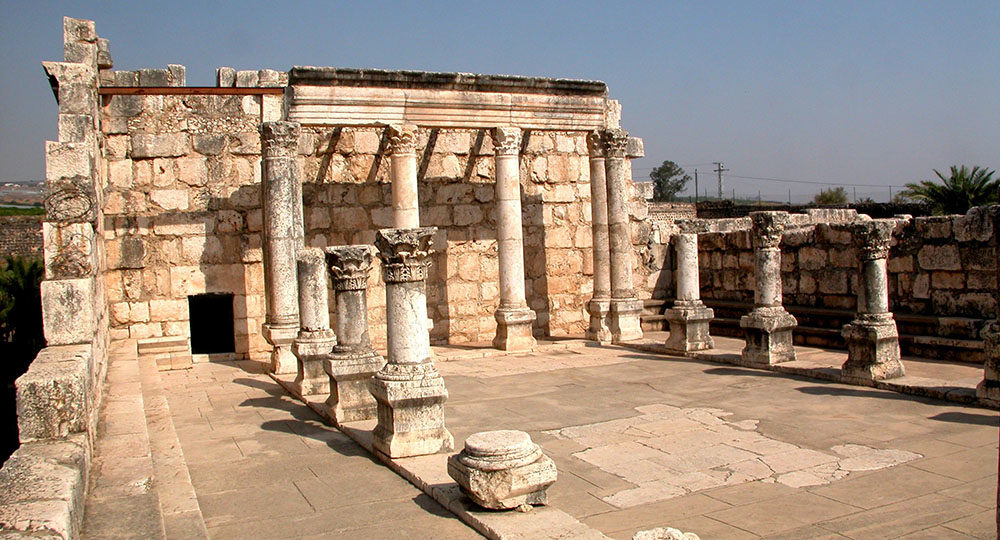
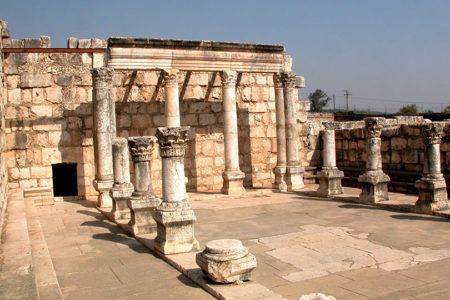
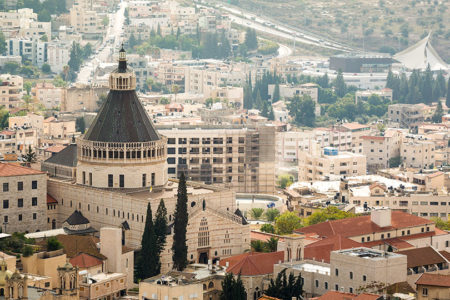
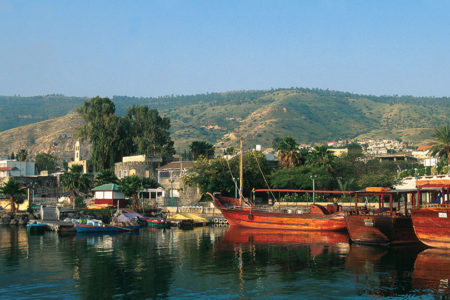
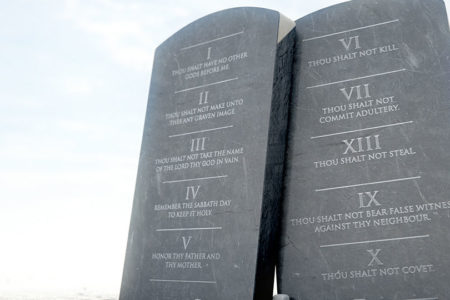
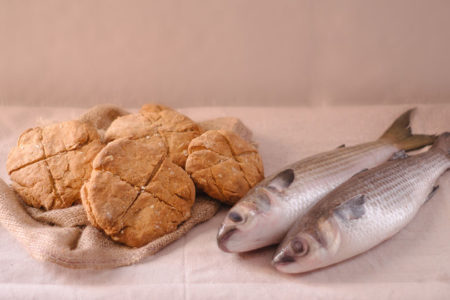


If one thinks that witnessing God’s presence and not to humbly submit one’s self to God, but instead turn away……. and believes there is no cost for doing so….. read again about the fate of Carpernaum!
Wow! I love when scripture interprets scripture! So thankful to have stumbled upon this commentary by Elwood McQuaid.
It certainly puts Capernaum in a spotlight for me.
Thank you sir!
Thank you Mr. McQuaid,
Your writings about Capernaum have helped me to understand Holy Scripture of the Lord Jesus the Christ.
Wonderful message! Greatly helped